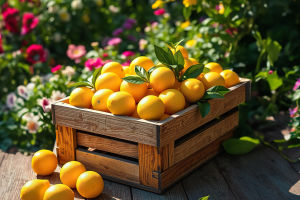Have you ever wondered why some desserts look so irresistible even before tasting? Plating is more than just placing food on a plate; it's an art form that elevates the dining experience.
A beautifully plated dessert creates anticipation and enhances flavor perception. Whether you are a home baker or a professional chef, mastering plating techniques can make your creations unforgettable.
Let's explore how you can turn your desserts into stunning visual masterpieces.
The Basics of Plating: Choosing the Right Plate
The first step in dessert plating is selecting the right plate. The plate serves as a canvas, so consider its size, shape, and color. White plates are classic for a reason—they make colors pop and highlight the dessert itself. Round plates offer a natural flow, while square or rectangular plates add modern appeal.
Avoid overcrowding; the plate should have enough empty space to let the dessert shine. Think about balance and proportion before you start placing components.
Using Color and Contrast Effectively
Color plays a vital role in creating visual interest. Use contrasting colors to make the dessert stand out. For example, a bright berry sauce looks stunning against a pale cheesecake. Natural colors of fruits, edible flowers, and sauces can create vibrant, eye-catching combinations.
Don't hesitate to use garnishes like mint leaves or cocoa powder to add subtle hints of color that complement the main dessert. Remember, color not only attracts the eye but can also signal freshness and flavor.
Textures and Layers: Adding Depth to Your Plate
A stunning dessert plate combines different textures—creamy, crunchy, smooth, or airy—to engage both sight and taste. Layering components strategically adds depth and interest. For instance, place a crisp biscuit base under a soft mousse or scatter crushed nuts alongside a silky sauce.
Texture variety makes each bite exciting and encourages diners to explore the plate. Think about how the components work together visually and texturally for a complete sensory experience.
The Role of Sauce and Garnishes
Sauces and garnishes are the "finishing touches" that complete your dessert presentation. Use sauces not just for flavor but also as artistic elements—swipes, dots, or pools can add drama and guide the eye. Try creating patterns with a spoon or squeeze bottle for precision.
Edible garnishes like fresh herbs, zest, or chocolate shavings can add elegance and enhance flavor. However, avoid overdoing it; garnishes should complement, not overpower, the dessert.
Balance and Symmetry vs. Asymmetry
Both symmetrical and asymmetrical plating have their place. Symmetry provides a clean, classic look that feels organized and elegant. On the other hand, asymmetrical arrangements often appear more dynamic and modern. When experimenting with asymmetry, balance elements through size, color, and negative space.
The key is to maintain harmony on the plate, ensuring the dessert remains the focal point while the design supports it.
Practical Tips for Home Platers
You don't need professional tools to create stunning plates at home. Simple kitchen items like spoons, forks, and small brushes can help you create beautiful sauce patterns. Use tweezers to place tiny garnishes precisely. Fresh ingredients like fruits and herbs can instantly upgrade the look.
Remember to keep the plate clean by wiping edges before serving. Practice patience and creativity—plating is as much about expression as it is technique.
Final Thoughts: Your Invitation to Experiment
Plating desserts is a fun and rewarding process that combines creativity, science, and passion. Next time you make a dessert, try out these techniques and see how they transform your creation. What's your favorite plating style? Do you prefer minimalist elegance or bold, colorful displays?
Share your plating experiences and ideas—let's inspire each other to make every dessert a feast for the eyes as well as the palate!


